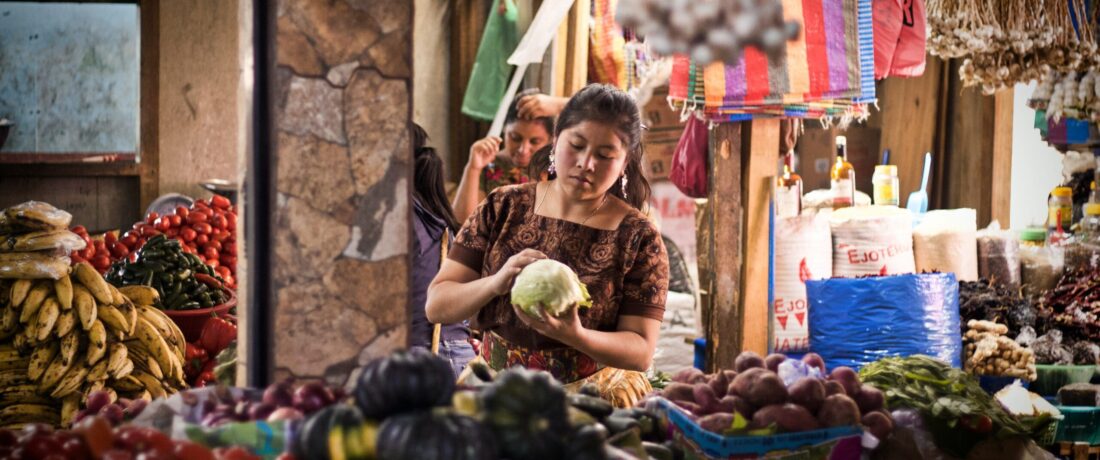#1 Lake Atitlan Tour: San Marcos, San Juan & Santiago
Our best-selling Lake Atitlan tour, this private boat trip allows you to explore the Mayan v...
There are many street markets throughout Guatemala, reflecting the country's rich cultural diversity and tradition of local commerce. These markets vary in size, frequency, and the goods they offer, ranging from daily markets in towns and cities to larger, more famous weekly markets that attract visitors from far and wide.
In this blog, we'll compare two of Guatemala's most vibrant markets: the legendary Chichicastenango Market and the hidden gem of Sololá Market.
We showcase the unique aspects of both markets, plus insider tips and essential information you need before visiting these bustling hubs of tradition and commerce. Whether you're drawn to the famed allure of Chichicastenango or the hidden charm of Sololá, this guide provides a comprehensive look at what makes each market unique, including practical advice on making the most of your visit, from safety tips to the best items to purchase.
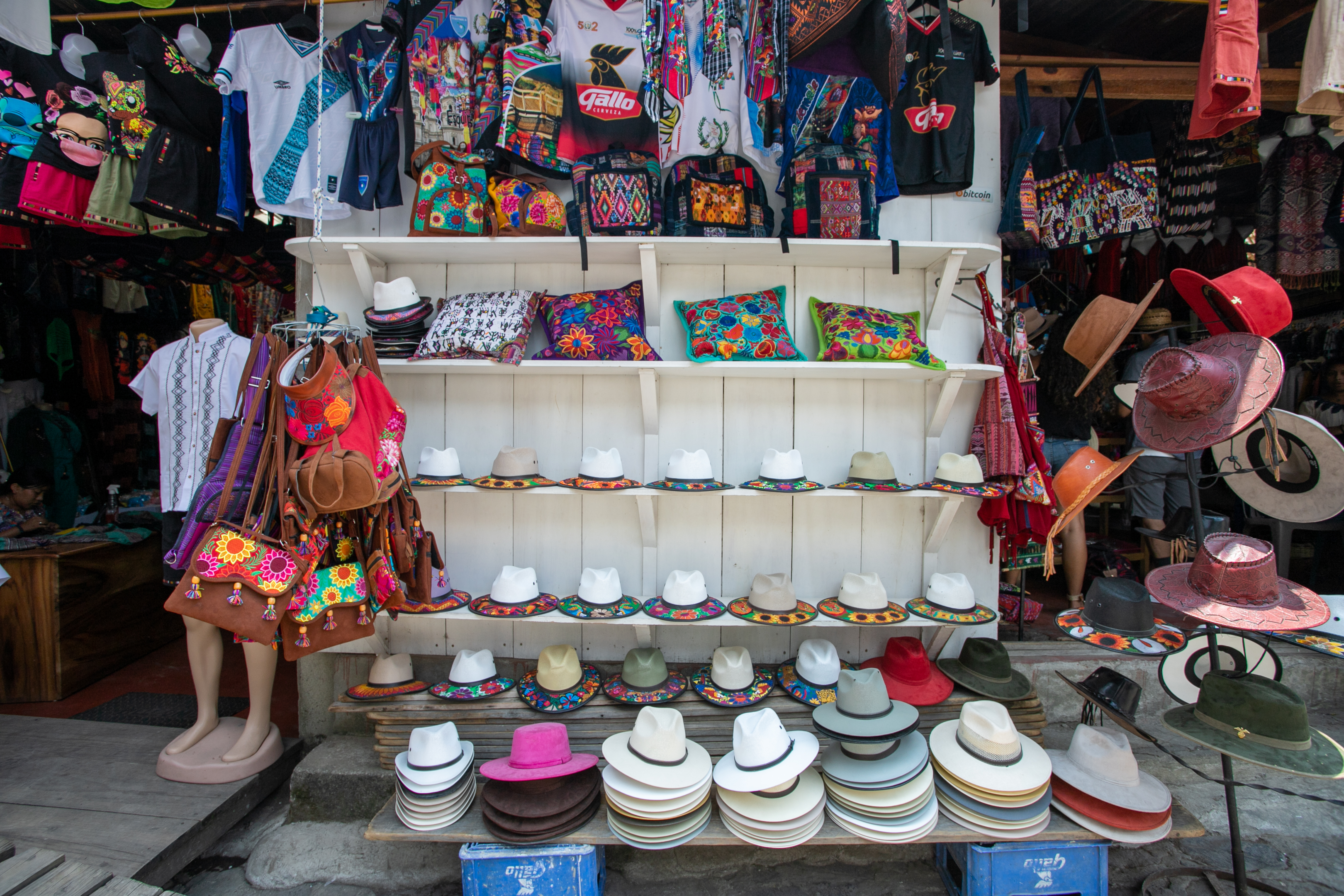
Visiting a street market in Guatemala will undoubtedly stand out as a highlight of your trip. Guatemalan markets are the lifelines of local communities. Bustling with history, culture, and tradition, they showcase intricate weavings and textiles that showcase the skills of local artisans, plus fresh produce and traditional foods that sample the flavors of Guatemalan cuisine.
The cultural significance of these markets cannot be overstated. They are a living museum of Guatemala's traditions, reflecting the diversity of its people and regions. This interaction with local vendors and artisans provides a personal connection to the culture and people of Guatemala, and you also support the local economy and the continuation of traditional crafts and practices.
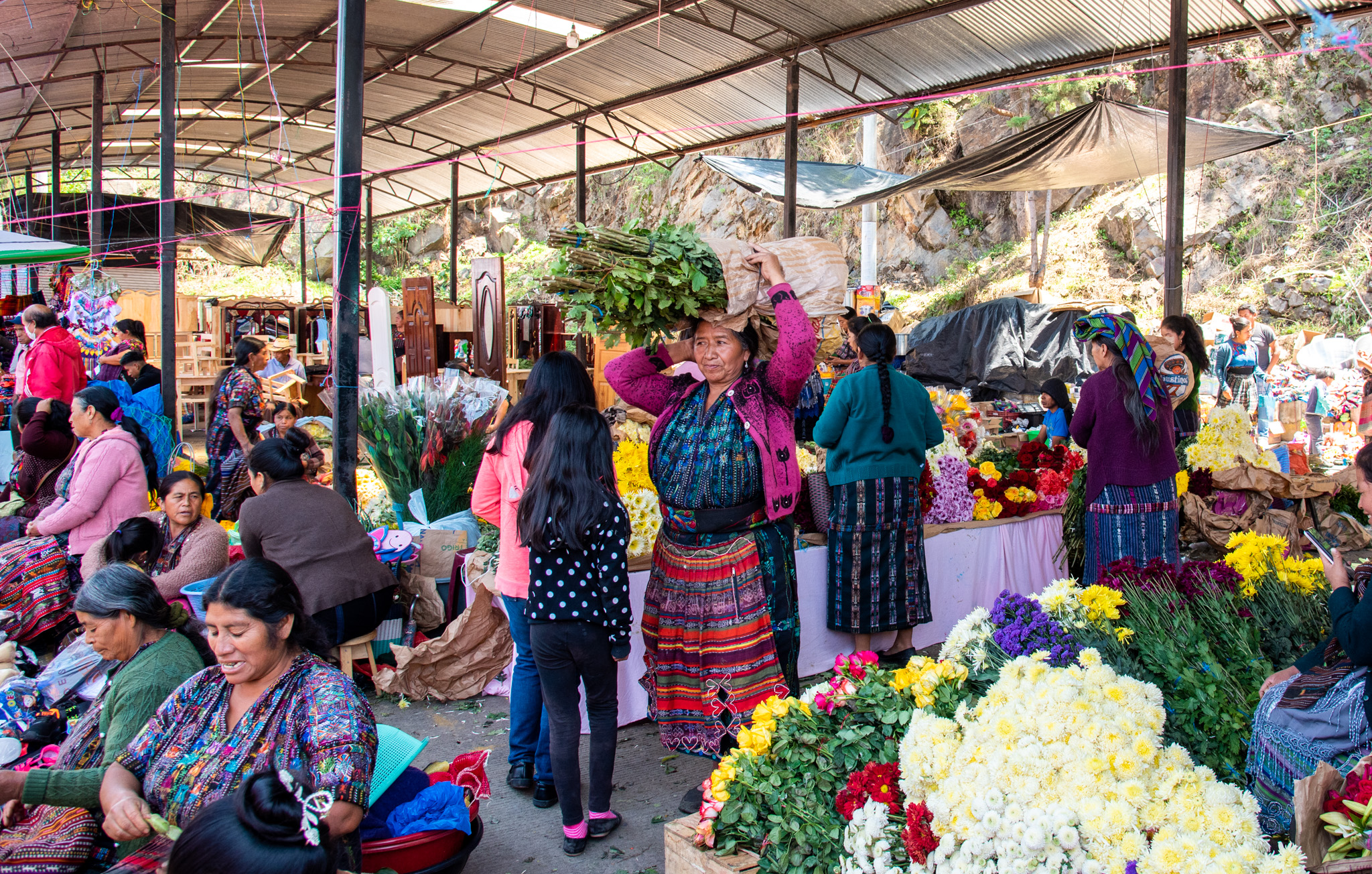
At Guatemala's street markets, such as Chichicastenango and Sololá, visitors can expect to see:
Vibrant Textiles: Handwoven textiles showcasing intricate designs and bright colors, including traditional clothing like huipiles.
Artisan Crafts: A wide array of handmade goods, such as pottery, wooden carvings, jewelry, and masks, reflect the rich artisanal traditions of Guatemala.
Local Produce: Fresh fruits, vegetables, and herbs, many of which are unique to the region, alongside stalls selling traditional spices and local delicacies.
Food Stalls: An assortment of local cuisine offerings, where visitors can taste traditional dishes and snacks made from local ingredients.
Flowers and Plants: Colorful flower markets with a variety of local and exotic flowers, as well as medicinal plants and herbs.
Spiritual Items: Items for spiritual and religious practices, including candles, incense, and items used in Mayan rituals.
Live Animals: Markets often include sections where local farmers trade in live animals, such as chickens, pigs, and sometimes livestock.
Cultural Performances: Depending on the day and market, visitors might see traditional dance performances, music, or religious ceremonies.
Community Interaction: Opportunities to interact with local vendors and artisans, offering insights into the daily lives and cultures of Guatemala’s diverse communities.
Stunning Scenery: The markets themselves are set against the backdrop of Guatemala's breathtaking landscapes, including mountain ranges and the picturesque Lake Atitlán for Sololá.
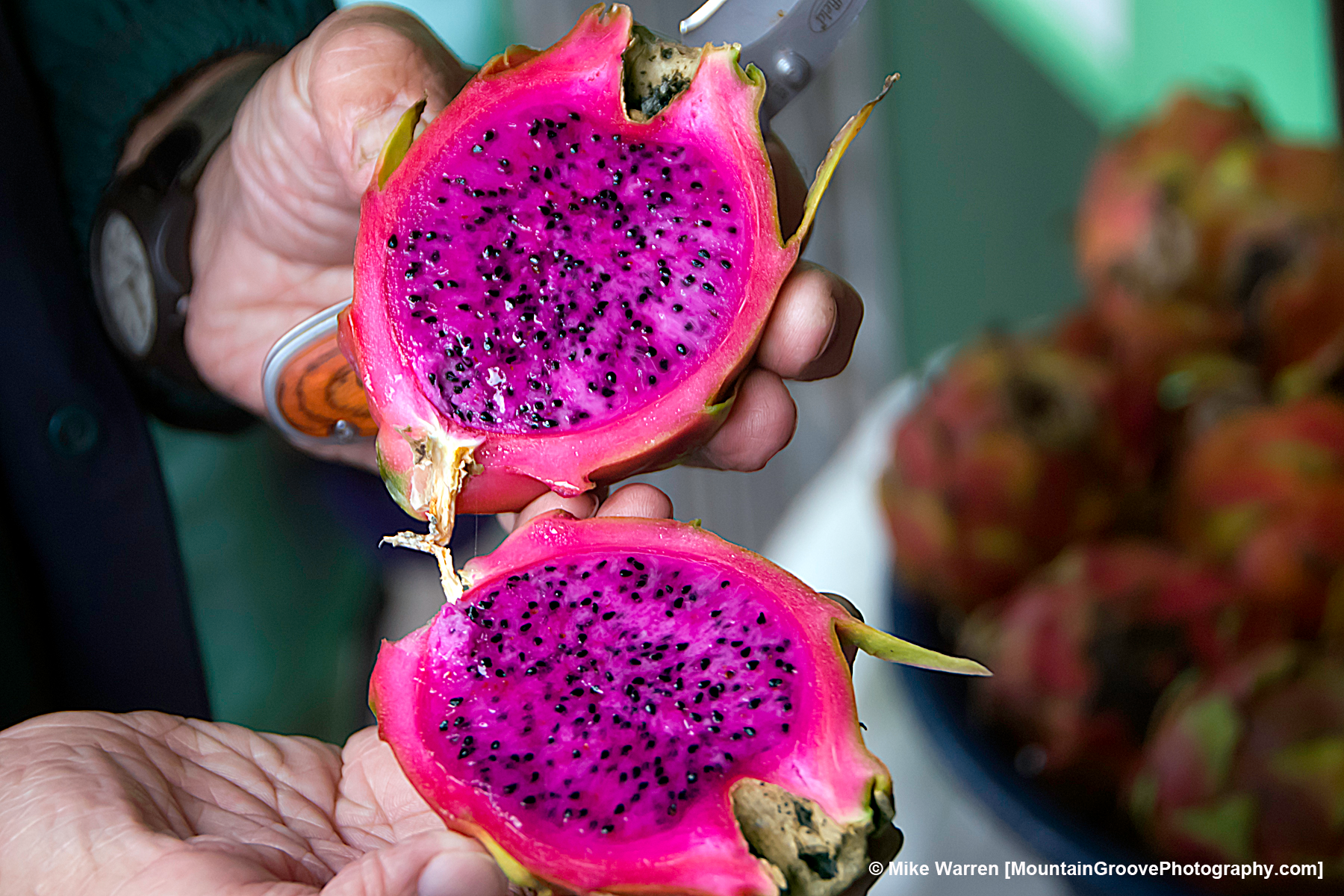
Nestled in the highlands, Chichicastenango is for the Cultural Historian, rich with historical layers and spiritual depth.
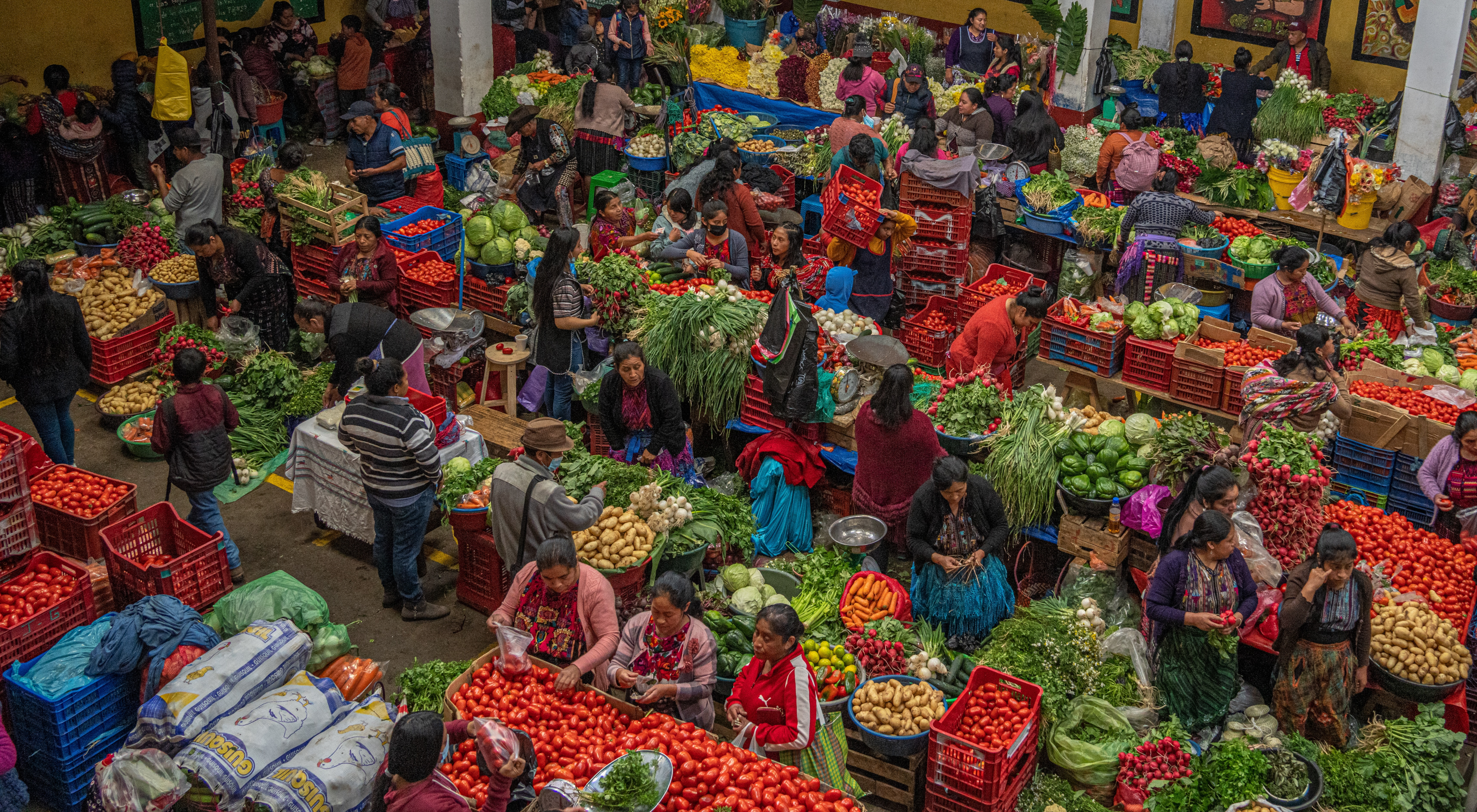
At the famous Chichicastenango market, traditionally dressed villagers in a kaleidoscope of colors come to sell their very colorful textiles, fruits, vegetables, flowers, handicrafts, food, pottery, wooden boxes, condiments, medicinal plants, candles, pom and copal (traditional incense), cal (limestones for preparing tortillas), grindstones, pigs and chickens, machetes, and other tools.
In the central part of the market plaza are small eateries (comedores). The Quiches are very proud of their heritage and ancient traditions. Their inhabitants are dedicated in great part to agriculture. Each community has its patron saint festivals “cofradias” (brotherhoods) and religious customs, which are mixed with pre-hispanic rites and Spanish religious ceremonies. They maintain strong bonds with their traditions, customs, and have great respect for the elderly.
Although parts of the market a very commercial, there is much mysticism in the air. You will be amazed by the religious blend that exists, where colonial Spanish Catholicism, modern evangelism, and ancient Mayan tradition, blend in a uniquely harmonious fashion. There is something deeply moving about watching a Mayan Indian or shaman, engulfed by incense and surrounded by flowers, praying to a catholic God and at the same time practicing ancient Mayan rituals, all in an old Spanish colonial Cathedral.
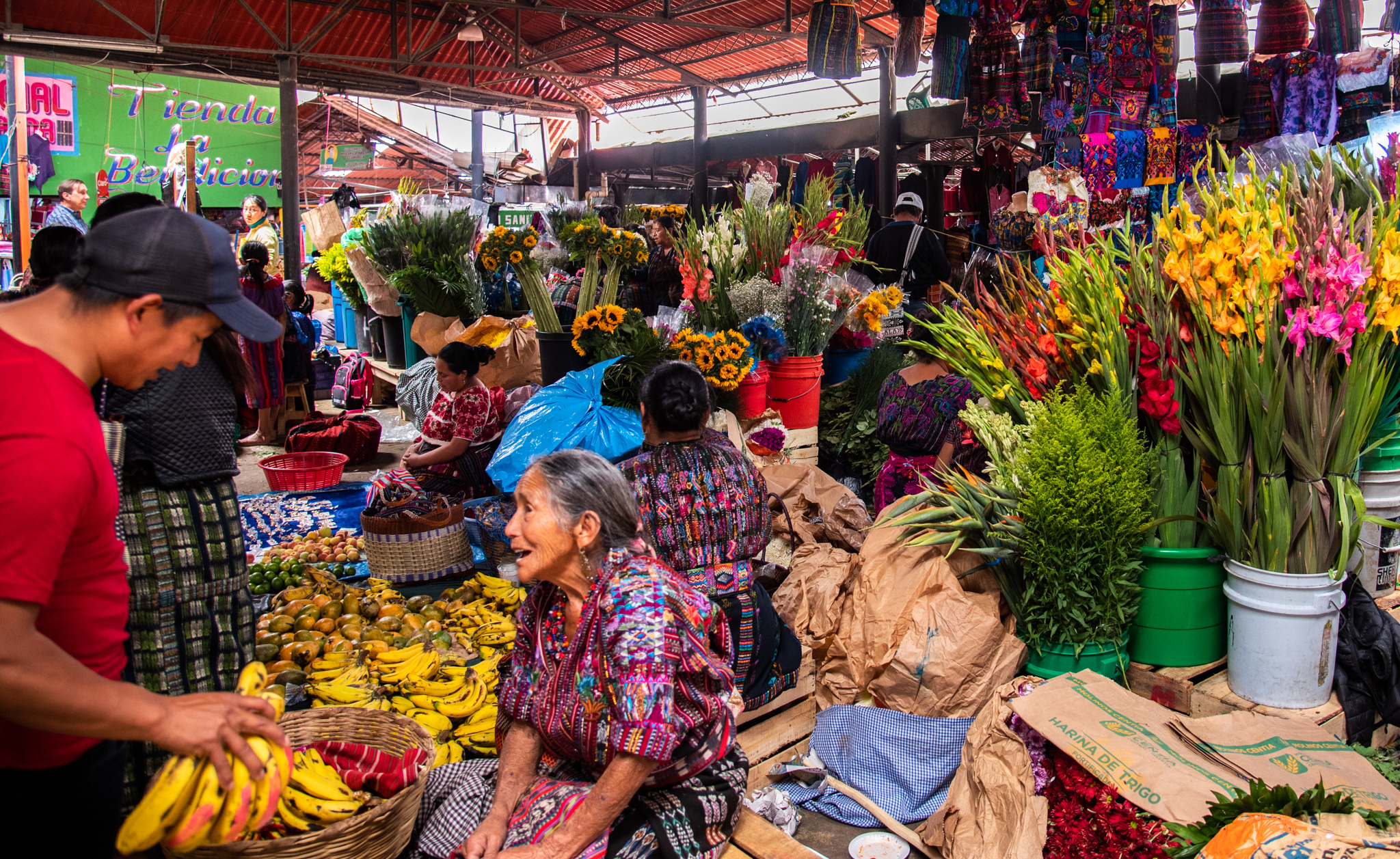
Visit Chichicastenango market on a Thursday to experience the market at its most vibrant, as it's one of the two official market days (the other being Sunday). Thursdays might be slightly less crowded than Sundays, offering a more relaxed experience while still capturing the market's full vitality.
Crowds: Being one of the largest and most famous markets in Central America, it can get very crowded, especially on market days (Thursdays and Sundays), which might be overwhelming for some.
Tourist Targeting: Due to its popularity among tourists, some visitors may find the market to be somewhat commercialized, with prices higher than in less tourist-centric markets.
Accessibility: Chichicastenango is located in the highlands of Guatemala, and getting there might be challenging for some travelers, especially those with limited mobility or those who prefer not to navigate winding mountain roads.
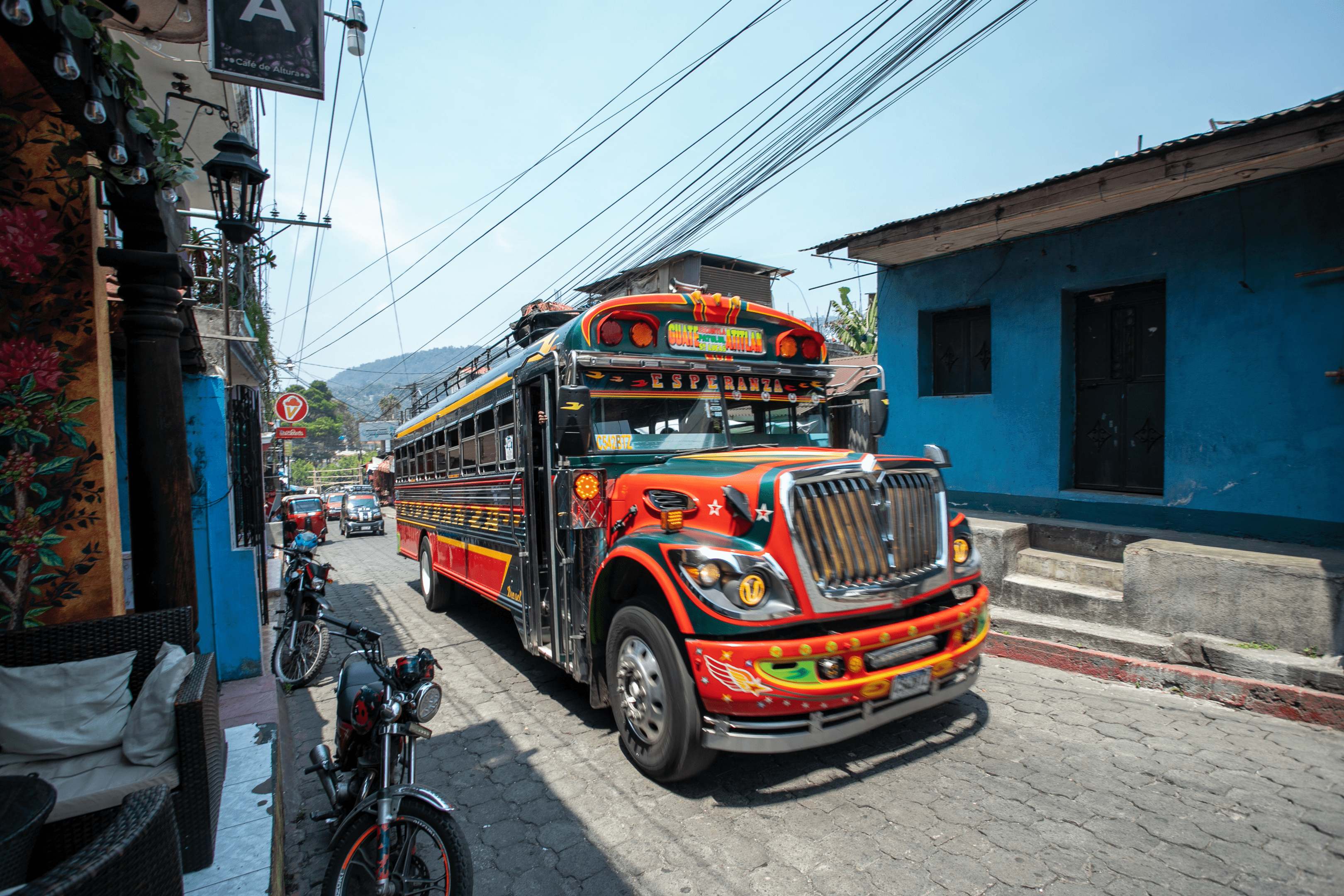
The amount of time you need when visiting Chichicastenango market can vary depending on your interests, but generally, a full day is recommended to properly experience the market. This allows you time to explore the stalls, take in the sights and sounds, enjoy some local food, and perhaps visit the Santo Tomás Church or the nearby Mayan ruins. If you're particularly interested in delving deeper into the local culture or want to explore the town beyond the market, an overnight stay could be worthwhile.
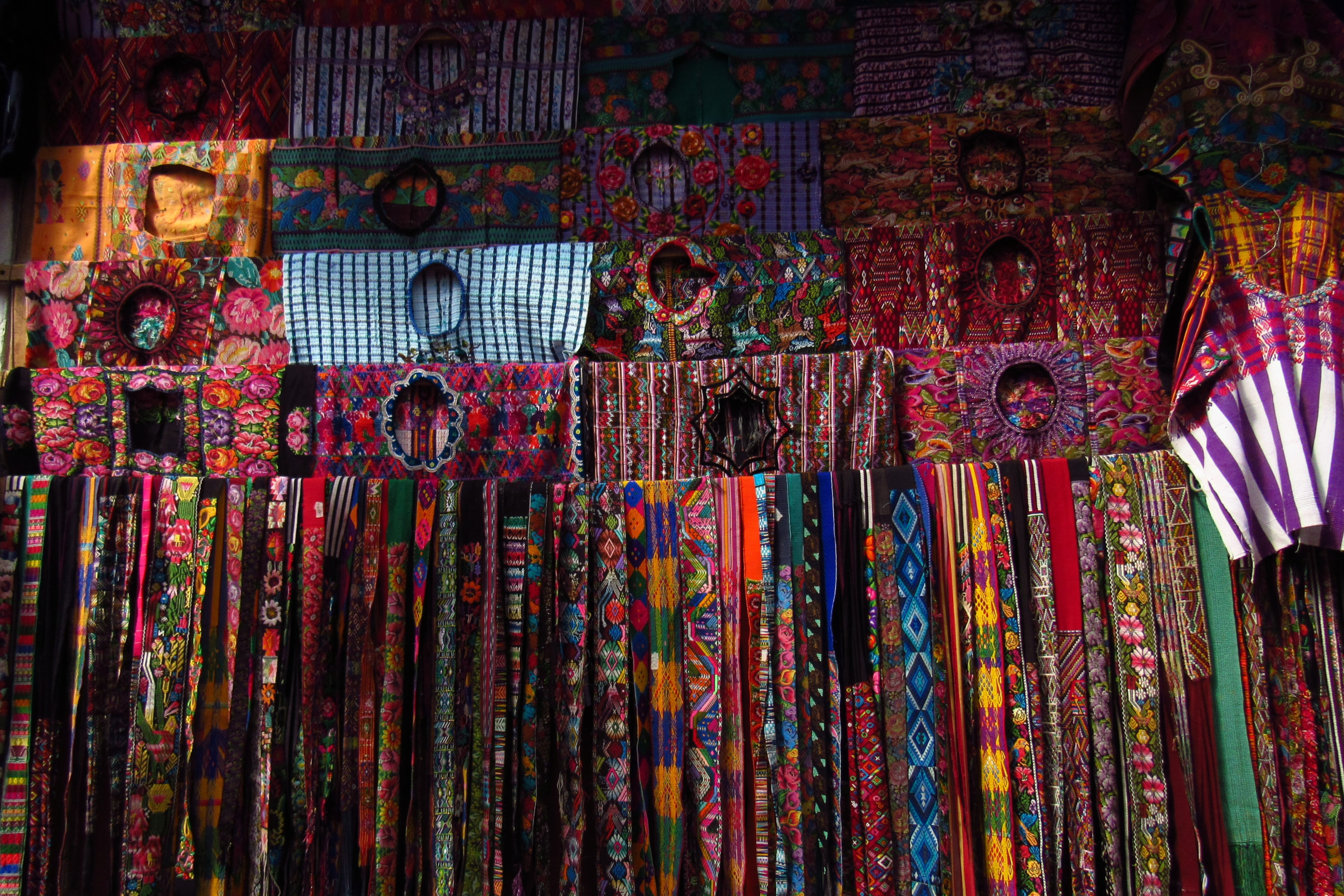
Book a guided tour of the Chichicastenango market with Kayak Guatemala.
Perched above Lake Atitlan, Sololá Market remains one of Guatemala's best-kept secrets. It's a place where the modern-day hustle fades, and the authentic spirit of the Kaqchikel Maya comes to life.
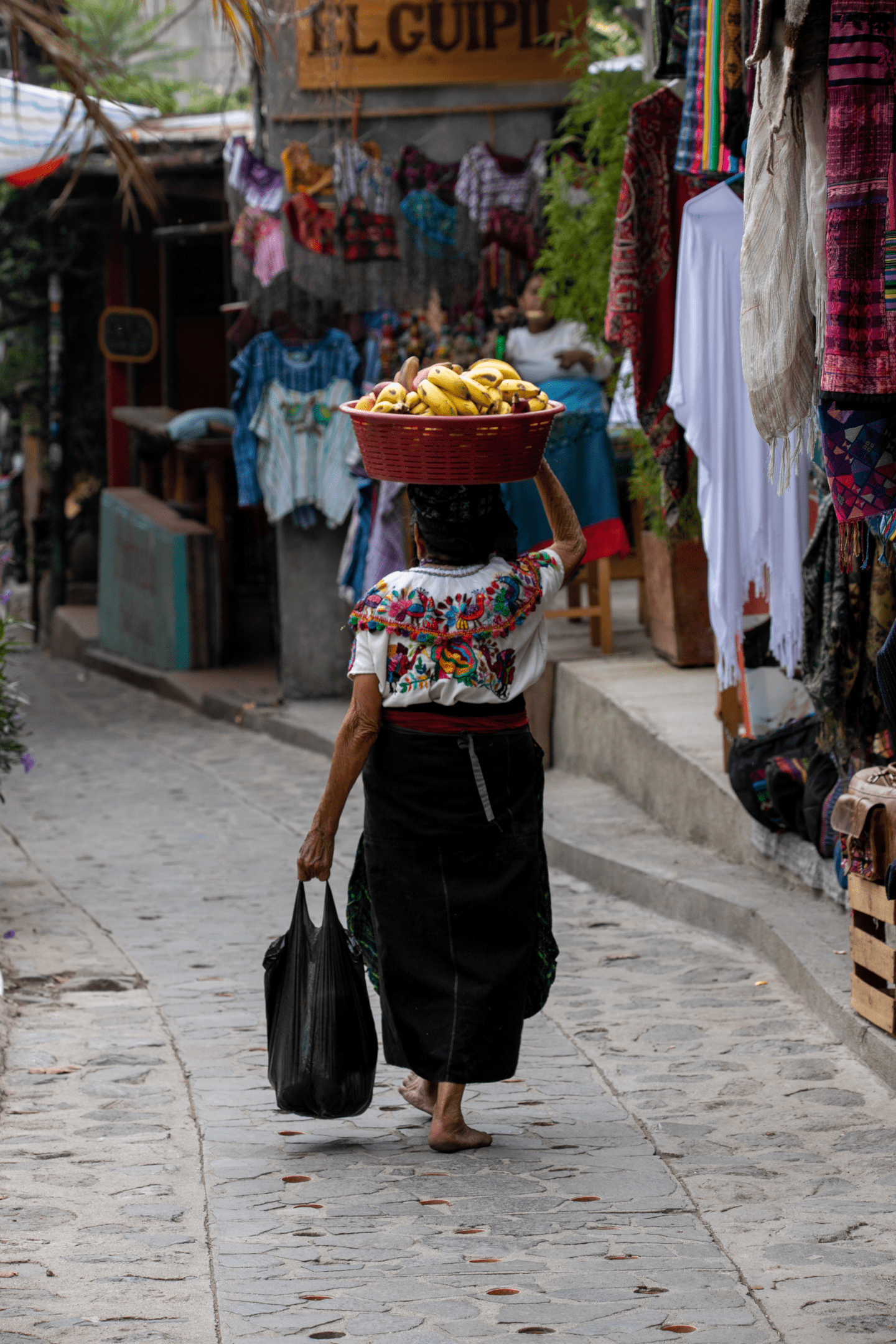
On the Solola tour you’ll step into the daily life of the Kaqchikel Maya – the indigenous people of Lake Atitlan – as you travel along ancient roadways, pass through cloud forest, corn and coffee fields to arrive high in the mountains where the Solola market can be found. The outside world has barely touched this section of the Guatemalan highlands and you’ll see villagers who still wear traditional indigenous dress on the Solola tour.
Few tourists are lucky to discover the unique charm of Solola market. As vibrant as the popular Chichicastenango market, Solola is bustling with local villagers every day of the week. Hidden 7,000 ft in the mountains above Lake Atitlan, several Mayan tribes travel here daily to trade fruits, vegetables, fish, flowers, handicrafts, textiles, and even live animals.
The market is a blaze of color with fruit, vegetables, and flowers. The documentary “Living on One Dollar” was famously filmed here, and the Solola tour will help you to similarly embark on a treasure hunt for rare goods and try your hand at bargaining with local sellers, perhaps for an ounce of Huisquils (a vegetable pear unique to Lake Atitlan) or a colorful tablecloth hand-woven by a young Mayan girl.
Book a guided tour of the Sololá Market with Kayak Guatemala.
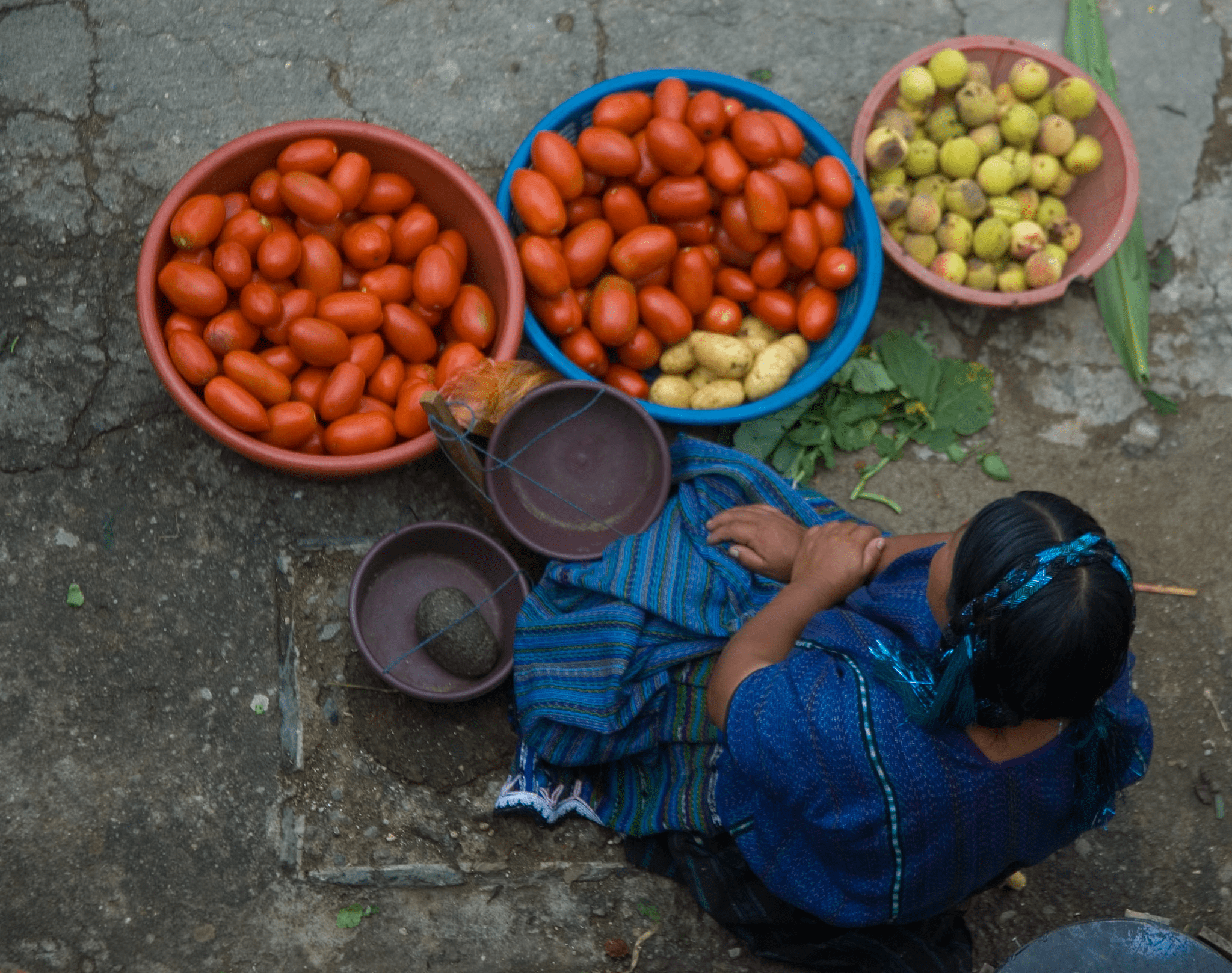
The best time to visit the Sololá market is on its market days, which are Tuesday and Friday mornings. Early morning is ideal as you can catch the market at its liveliest, with fewer crowds and a cooler temperature. This timing also allows you to see the full range of products on offer before anything sells out. Visiting during the dry season months, from November to April, can also enhance the experience with more predictable weather.
The easiest way to get to Sololá from Lake Atitlán is by public bus or private shuttle, especially from the town of Panajachel, which is directly on the lake and acts as a transportation hub. The trip from Panajachel to Sololá takes about 30 minutes. Buses and shuttles are frequent on market days. Alternatively, taxis are available, offering a more comfortable but pricier option.
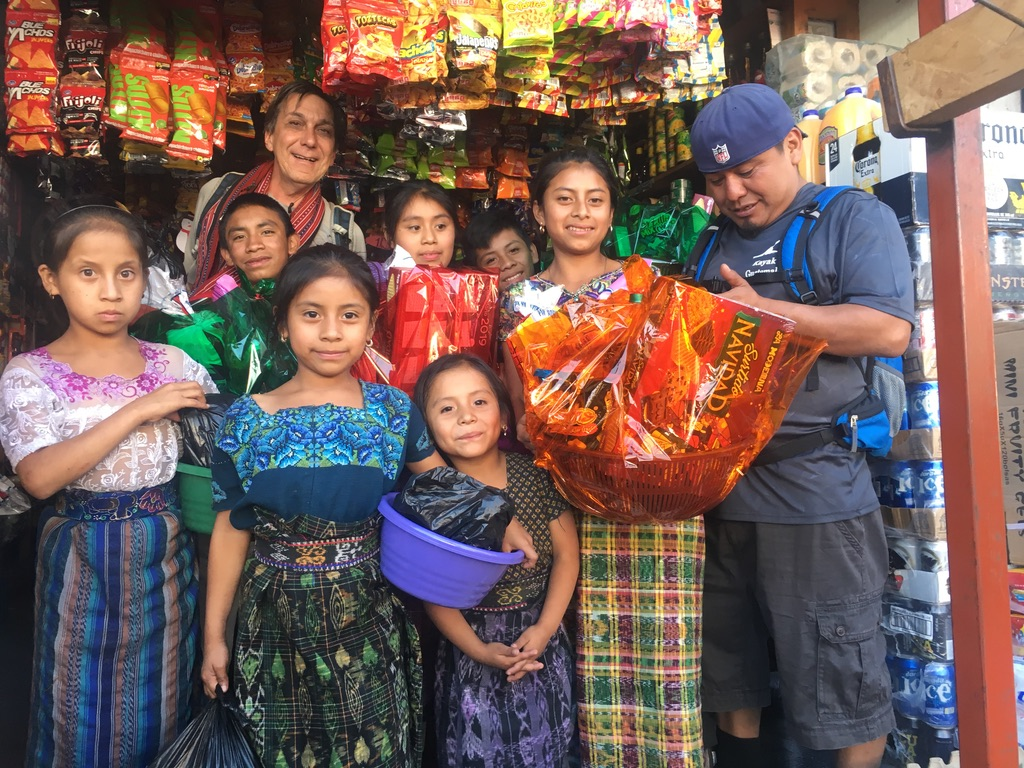
Once you’ve found your treasures at the Solola market, you are closeby to the sacred caves of San Jorge where you can witness a Mayan shaman performing a Fire Ceremony. In this traditional Mayan ceremony, the shaman speaks to spirits to ask for help from divinity, mother nature and ancestors passed. Colorful candles, flowers, and incense are contributed to the fire as a gift to the Gods. As the fire burns, prayers and meditations are lifted up in the smoke to be carried to the heavens. Negative energy is released, and positive energy is empowered.
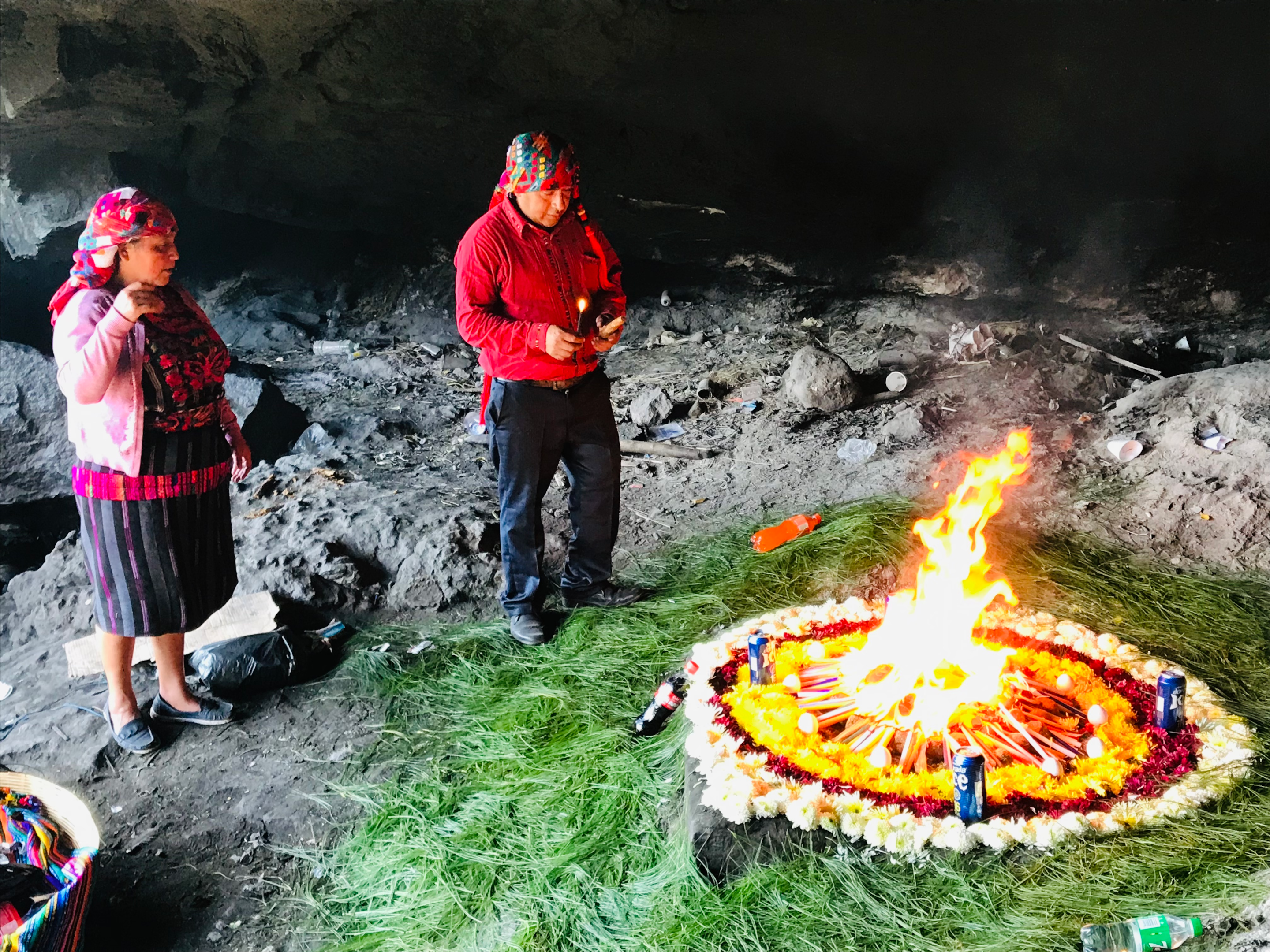
Choosing between the Sololá and Chichicastenango markets depends largely on what kind of experience you're seeking.
Chichicastenango offers a dive into the deep roots of Maya civilization, with its rituals and crowded aisles. It is the most famous and popular market in Guatemala, making it an excellent choice for history enthusiasts and those interested in a market that is rich with history and spirituality.
On the other hand, Sololá offers a more intimate encounter with the daily lives of the indigenous communities. As something of a hidden gem, it appeals to those looking to explore off the beaten path. Thanks to its proximity to Lake Atitlan, Solola is also more easily accessible and can be visited in half a day.
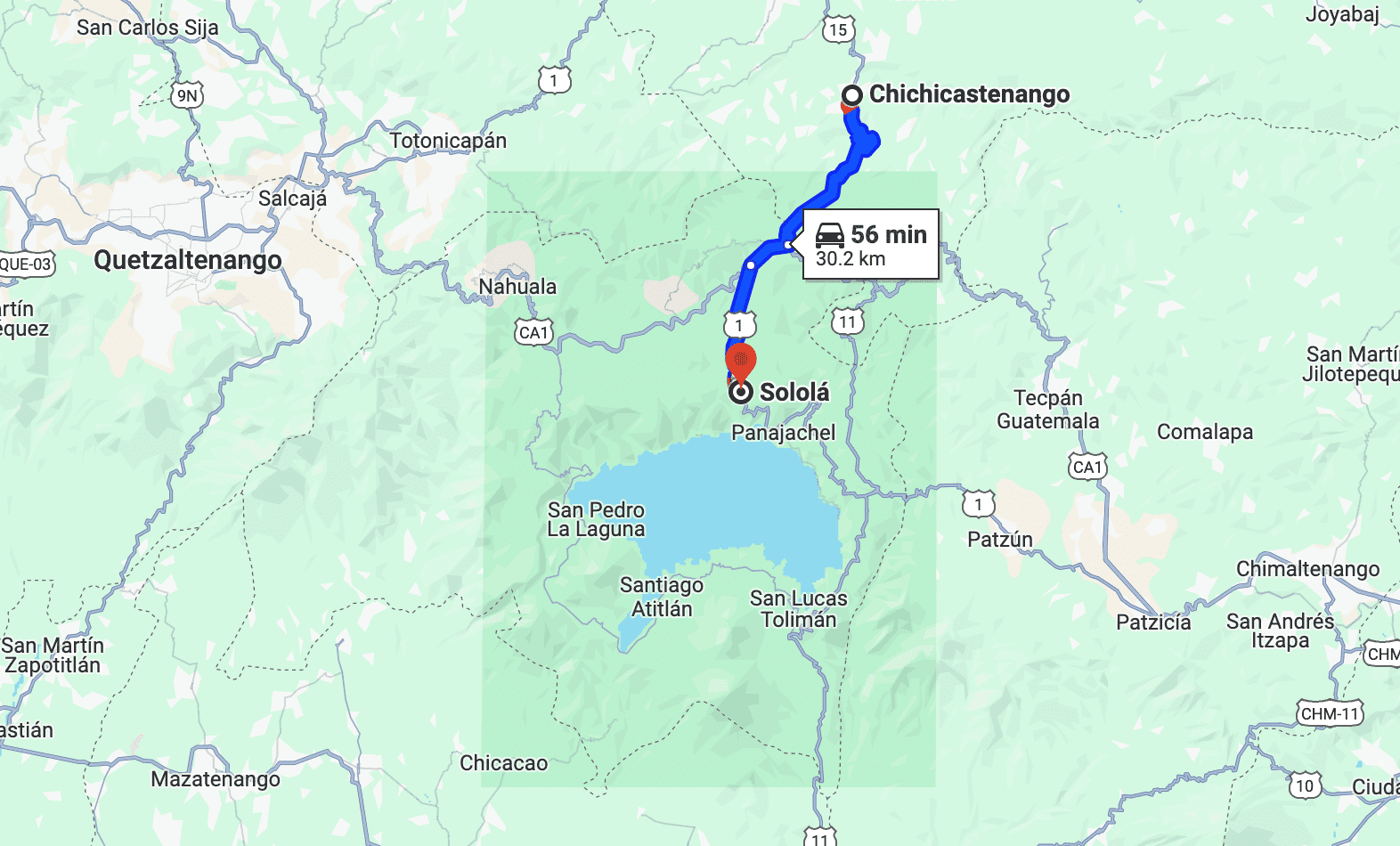
Lake Atitlán is an ideal base camp for exploring the markets in Guatemala due to its central location among several key market towns, including Chichicastenango, Sololá, and Panajachel. The scenic beauty of the lake, surrounded by volcanoes and traditional Maya villages, adds a serene backdrop to your explorations.
From Lake Atitlán, you can easily access various markets on different days of the week, experiencing the diverse cultures and crafts of each region. The area also offers a range of accommodations and amenities to suit any traveler's needs, making it a comfortable and convenient hub for your market adventures.
Street markets in Guatemala are treasure troves of handcrafted goods and local produce. Popular items to buy include:
Textiles and Weavings: Handwoven textiles, such as huipiles (traditional blouses), tablecloths, and scarves, showcasing intricate Maya designs.
Ceramics and Pottery: Colorful ceramics and pottery that reflect Guatemala's rich artisanal tradition.
Wooden Crafts: Hand-carved wooden items, from masks to kitchen utensils.
Jewelry: Beaded jewelry and jade, a stone that holds special significance in Maya culture.
Coffee and Spices: Guatemala is famous for its coffee; buying it directly from local markets ensures freshness and quality. Spices and local herbs offer another taste of the region's culinary diversity.
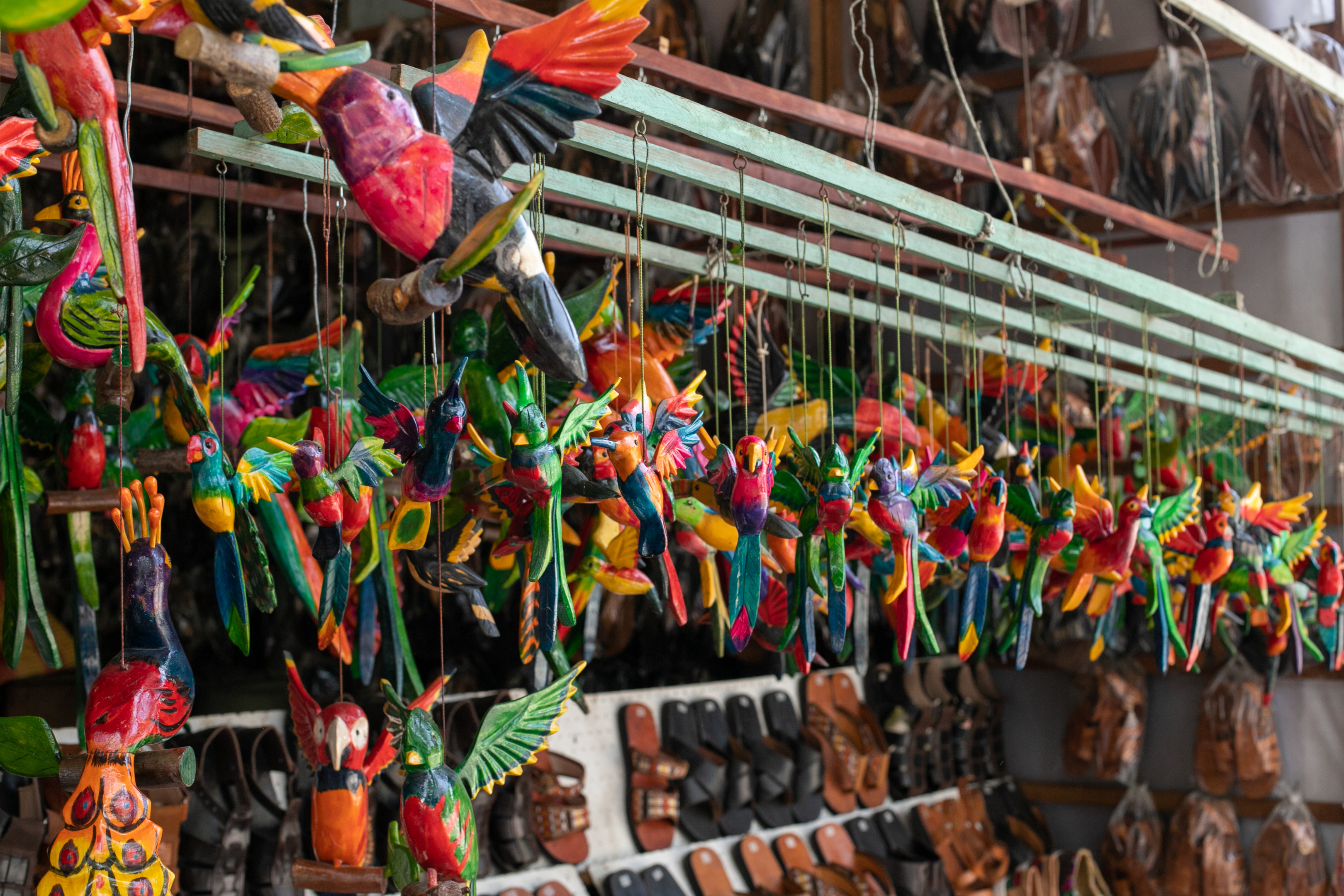
Yes, Chichicastenango and Sololá markets are generally safe for visitors. However, as with any crowded place, it's important to be mindful of personal belongings and practice common-sense safety precautions. Pickpocketing can happen in busy areas, so keeping valuables secure and being aware of your surroundings is advised. Both markets are well-accustomed to tourists, and local authorities and vendors are typically helpful and welcoming.
Yes, bargaining is common at the Sololá market, but it should be done respectfully and within reason. Start by offering a lower price than asked, but be prepared to meet the seller halfway. It's important to remember that many vendors rely on these sales for their livelihood, so while it's acceptable to negotiate, it should always be done with respect for the value of the work and products.
Cash is king at Guatemala street markets, and it's the preferred — often the only — payment option for most vendors. It's advisable to carry small denominations of the local currency (Guatemalan Quetzales) to make transactions smoother. Credit cards are rarely accepted, if at all, especially by the smaller stalls and local artisans. There are ATMs in Sololá and Chichicastenago, but it's a good idea to withdraw cash before you get to the market to avoid any inconvenience.
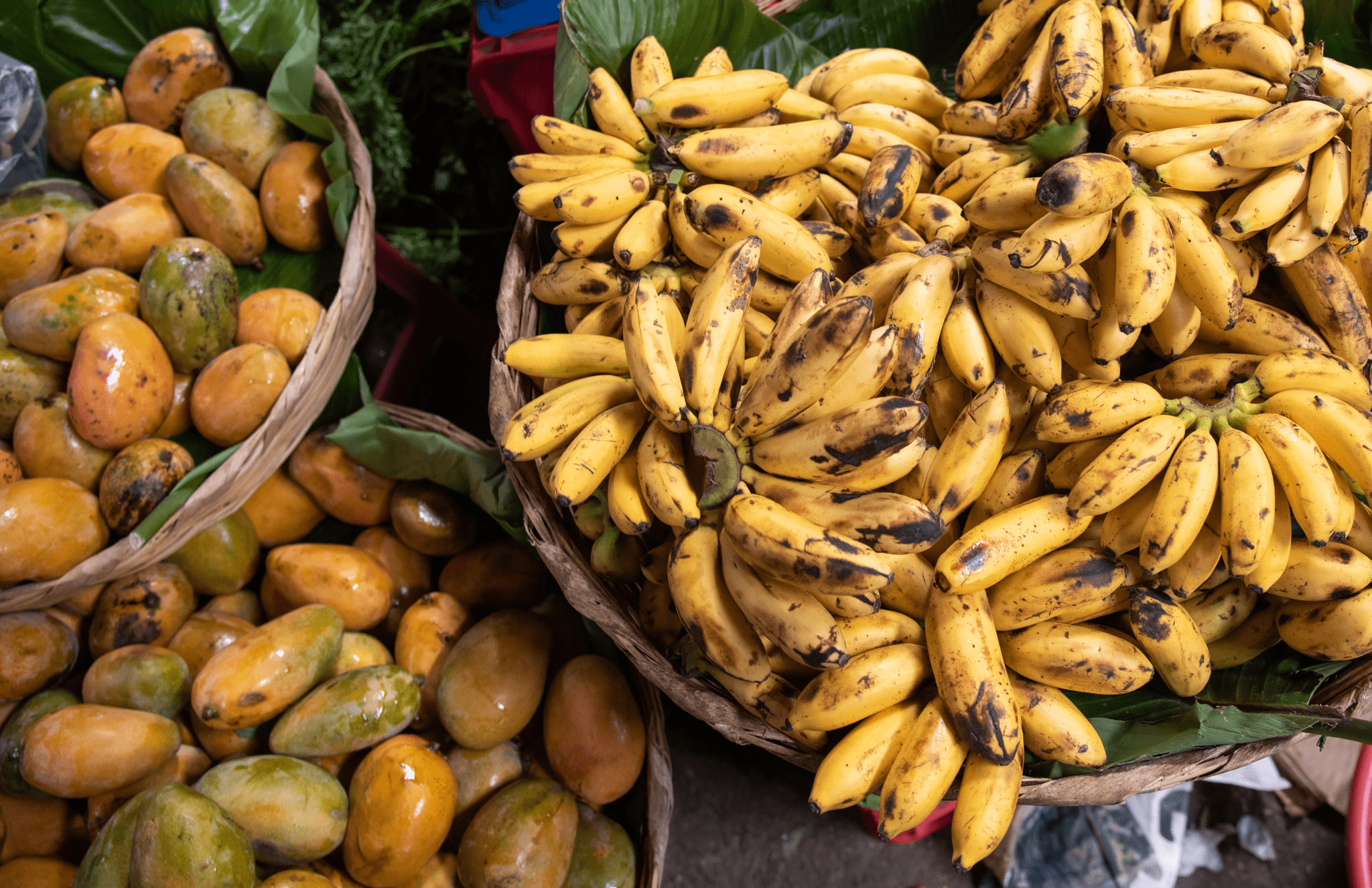
Booking a Chichicastenango tour with Kayak Guatemala offers several compelling advantages for experiencing one of Guatemala’s most iconic markets. Here are key reasons why choosing Kayak Guatemala can enhance your visit to Chichicastenango:
Hassle-Free Logistics: We handle all logistics, including transportation from Lake Atitlán to Chichicastenango, ensuring a smooth and stress-free experience. Our guides know the area well, helping you navigate the bustling market safely while also offering tips to ensure a comfortable experience.
Cultural Immersion: Kayak Guatemala’s tours are designed to offer a deep dive into local culture. Beyond just shopping and sightseeing, you’ll learn about the craftsmanship behind the textiles, the significance of the items sold, and even the spiritual aspects of the market, including its renowned religious ceremonies.
Supporting Local Communities: By booking with a local tour operator, you’re directly supporting the local economy. Kayak Guatemala is committed to responsible tourism practices, including employing local staff and guides, which contributes to the well-being of the communities around Lake Atitlán.
Personalized Experiences: They offer the flexibility to cater to your interests, whether you’re keen on learning more about Mayan culture, interested in the local culinary scene, or want to find the best spots for artisan crafts.
Access to Hidden Gems: With their deep local knowledge, Kayak Guatemala's expert local guides can guide you to lesser-known spots within the market and the surrounding area, from hidden stalls with unique crafts to quiet corners where you can observe market life unfold away from the main thoroughfares.
--> Book a guided tour of the Sololá Market with Kayak Guatemala.
--> Book a guided tour of the Chichicastenango market with Kayak Guatemala.
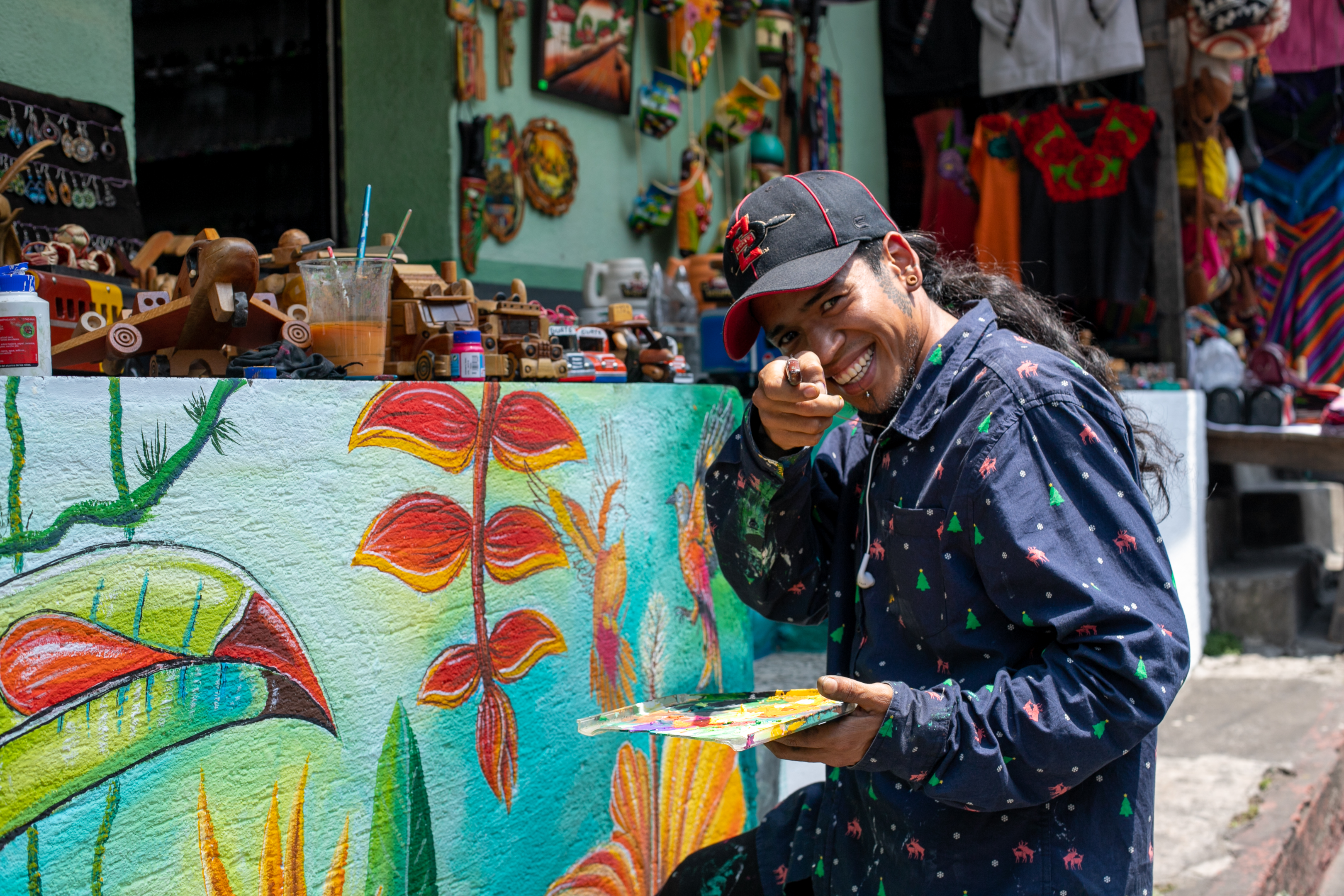
Kayak Guatemala is Lake Atitlan’s #1 base camp for exploration and adventure, offering activities like epic volcano hikes, family kayak tours, cooking classes, and village-to-village boat and walking tours. We employ and upskill local people, plus a portion of our profits goes towards an NGO that works hard to alleviate poverty in Lake Atitlan.
For more help with planning your trip to Lake Atitlan, check out our "Top Tours & Things To Do In Lake Atitlan" guide or our Guatemala 7-day itinerary for families.
Check out our full range of tours here.
